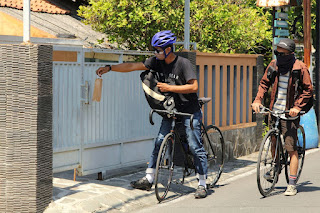I have done what just might be the strangest sequence of cycling I’ve done in a while. What makes it so odd is its familiarity: I have done the same ride three times in five days: today, Monday and Saturday.
Why did I do that? Well, I took Negrosa, my vintage Mercian Olympic, to Greenwich, Connecticut on Saturday. That has become a frequent weekend day ride for me. I took that same ride on Monday because I wanted to start the week right. And today I hopped on Dee-Lilah, my Mercian Vincitore Special. The weather—overcast, with no threat of rain and temperatures that maxed out at 24C (75F)—was ideal and I just wanted to ride and ride. Somehow I ended up taking that 140 kilometer round trip again.
Perhaps an unconscious, or at least unacknowledged, wish guided to today’s ride. Whether it had to do with Dee-Lilah, the weather or me, today I felt better riding today than at any time since last June, when a crash led to a weekend stay in Westchester Medical Center.
If I can say “this is the best I’ve felt” at my age, I guess things are pretty good.


